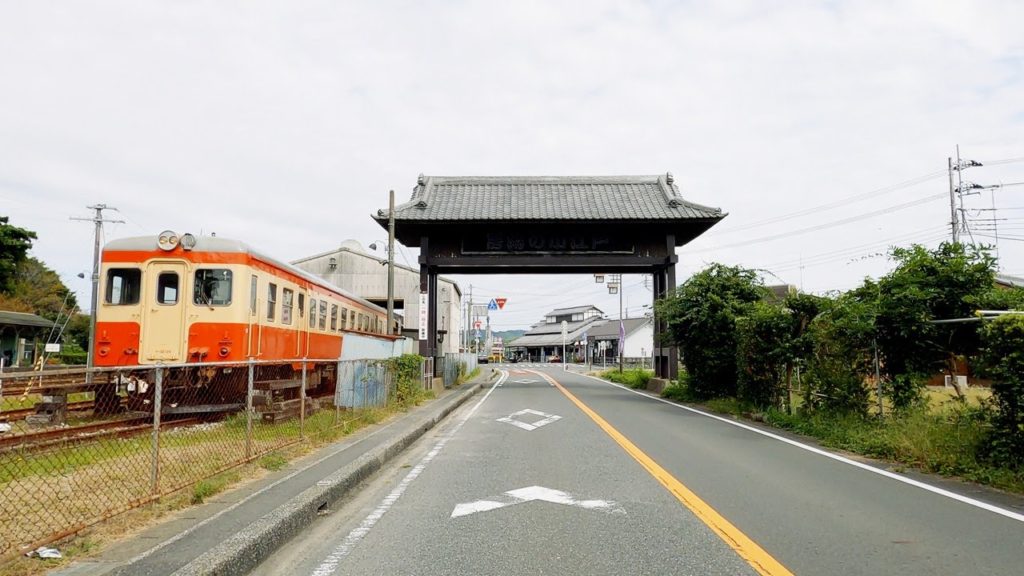Map:
Thank you for watching! We publish mainly driving videos from Japan.
If you like our videos, please consider subscribing to our channel.
Youtube:
00:00 Otaki-machi
10:56 Mutsuzawa-machi
24:55 Chosei-mura
36:40 Shirako-machi
Ōtaki (大多喜町, Ōtaki-machi) is a town located in Chiba Prefecture, Japan. The town is known for its association with Edo period general Honda Tadakatsu, and its prominent castle. As of December 2015, the town had an estimated population of 9,676, and a population density of 74.5 persons per km2. The total area the town is 129.87 square kilometres (50.14 sq mi), making it the largest of Chiba Prefecture’s towns and villages.
(Wikipedia)
Japanese place names include names for geographic features, present and former administrative divisions, transportation facilities such as railroad stations, and historic sites in Japan.
Most place names are suffixed with its administrative division. These suffixes are often dropped in common usage when no ambiguation is likely. The suffixes are as follows:
-ken (県) for a prefecture; e.g., Yamanashi-ken
-to (都, lit. “capital”), prefecture-level region name unique to the capital Tōkyō-to
-fu (府, lit. “office” or “area”), prefecture-level region (sometimes translated “urban prefecture”) named so for historical reasons. There are now only two: Ōsaka-fu and Kyōto-fu. Tokyo-to was also classified as this before being reorganized.
-dō (道), an “administrative circuit”, a semi-archaic administrative division formerly widespread. Modern usage is limited to Hokkaido, but terms like Tōkaidō (southern portion of eastern Japan) remains in common informal usage.
Because of the above four suffixes, the prefectures of Japan are commonly referred to as todōfuken (都道府県). And below the level of prefectures, there are:
-gun (郡), a district composed of one or more machi or mura, usually rural. The Japanese postal service and many other sources translate this as county.
-shi (市), a city
-ku (区), a ward of a city; e.g., Naka-ku in Hiroshima. The 23 special wards of Tokyo are separate local governments nearly equivalent to cities.
-machi or -chō (町), a town – this can be a local government or a non-governmental division of a larger city
-mura or -son (村), a village; e.g., Kamikuishiki-mura – this can also be a local government or a nongovernmental division of a larger city or town
These smaller administrative units are collectively referred to as shikuchōson (市区町村).
(Wikipedia)
Rental cars and driving in Japan are rare in or around the major cities, as public transport is generally excellent and gets you almost everywhere. In addition, the roads of major cities like Tokyo are plagued with massive traffic jams and parking is expensive and difficult to find, so driving there is more of a hindrance than anything else. However, many rural areas can really be explored with only your own transport, so driving should certainly not be dismissed out of hand, especially on the vast, sparsely populated island of Hokkaido. Due to Hokkaido’s cooler climate it is a very popular destination in summer, so if you are considering renting a car at this time be sure to do so well in advance of your planned travel date as they are often unavailable at this time. Often the most feasible option is to combine the two: take the train out to the countryside and then pick up a rental car at a station. JR’s Ekiren has outlets at most larger train stations and often has discounted train & car packages.
Japanese driving habits are generally as good as anywhere else, and usually better than other Asian countries. Japanese roads are generally of good quality, with smooth bitumen surfaces. Gravel roads are very limited, usually forest roads, and unlikely to be on the itinerary of too many tourists. Roadworks are frequent however, and can cause annoying delays. In addition, snow can often accumulate on roads in much of Hokkaido and western Honshu, making it tricky to drive even on the freeways. Certain mountain passes are shut over winter, those that are not usually require either snow chains or a combination of studless winter tires and 4-wheel drive. If you rent a car in mountainous/northern areas they will generally come with this equipment already included.
An international driver’s license (or Japanese license) will be required if you wish to rent a car or drive in Japan, and must be carried at all times.
(Wikivoyage: Driving in Japan)
Narita International Airport Access Navigation
Haneda Airport Information
Camera: GoPro HERO8 Black
Filming Date: October 6th, 2020
#TokyoSmith #japantravel #japandrive


AloJapan.com